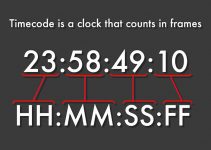Once you’ve mastered your craft, it’s easy to look back and quickly ignore the first steps you’ve took on that path. It may be due to a mentor or experience alone, but all great ones have begun their journey with a first step.
Now, the guys from Cinecom.net have a list of five essential mistakes that many of those who are dipping their toes in the filmmaking pond tend to fall into. We suggest you take a look to avoid those along the way.
#1 – Camera Height
If you give a camera to a film student, oftentimes you’ll see him take great care in framing and composition, but there’s a key aspect that can probably be ignored: camera height. In most cases having the camera at eye level is the safe way to go, but sometimes happens that the angle is just a little bit too low or too high.
And that’s terrible. If you want an angle for dramatic or narratorial reasons, then let it be an unconventional angle, tilt that camera so that no one could think that it was a mistake.
#2 – Background
Another common mistake is the background. Anxious to lit and give proper room to our talent we overlook the importance of what is sitting in the back, and it happens that weird shapes or strange patterns will ruin our composition. Once you see it, you can’t fix it, right?
Well, it’s better to avoid that in the first place, and there are ways to do so. You could use a contrasting color palette, distance or simply manipulate the background by blurring it using depth of field. Or you could generally avoid distracting elements, bright spots, and annoying movements as you go. Either way, just a little attention will save you a headache later.
#3 – Lighting
That’s a slam dunk. Almost all beginners will make errors in lighting, especially at the beginning of their careers. Well, there are a few tips to keep in mind. Probably, you’ll be using little to no lights in your first shoots, and in exteriors, that means using the sun.
Try to keep it at an angle, but behind your talent, so that you’ll get a little bit of contrast, but won’t create too harsh shadows. When filming indoors, avoid spotlights, and try to remove lights instead of adding, using the so-called negative fill. A blank cloth will do the trick.
#4 – Body Position
While holding the camera, you will be tempted to keep the most stable position to get the perfect shot. That is a wise choice only if you are shooting an interview or if there’s a specific requirement for that.
In all the other cases, it’s much better if you keep a position that allows you to follow the movement of the talent, in case he or she does something unexpected and you need to follow.
#4 + 1 – Mixing Styles
Plus one because it’s not exactly a separate point, but could be almost included in the previous one. We’re talking about different filming styles, not an intended creative decision. That is often an unwanted consequence of the lack of experience and the shoestring budget.
You plan a whole day shoot. You go in overtime, everyone is getting tired and you try to cut corners. You drop the tripod you’ve been using for the whole day, and you go handheld. That may seem a good idea at the moment, but actually, in the long run, it will be worse. Not because of the handheld per se, but because mixing different shooting styles almost never works.
#5 – Monitoring
We’ve all been there, at least once in our careers. Don’t be shy, you can admit it. Using monitoring tools is the only way to be sure of nailing exposure, focus, audio levels, and whatnot with these digital cameras.
Don’t worry about being too dorky, it’s the right thing to do. Use the assets you have at your disposal, that’s what professionals do. If you are worried about forgetting it on set while thinking of a thousand different things, you could stick some reminders on the camera itself.
So, those were some of the rookie mistakes that Jordy from Cinecom.net was constantly making at beginning of his filmmaking career. We’re pretty sure that if you ask around more than enough of your colleagues, you will find that they’ve been there too.
[source: Cinecom.net]
Disclaimer: As an Amazon Associate partner and participant in B&H and Adorama Affiliate programmes, we earn a small comission from each purchase made through the affiliate links listed above at no additional cost to you.



